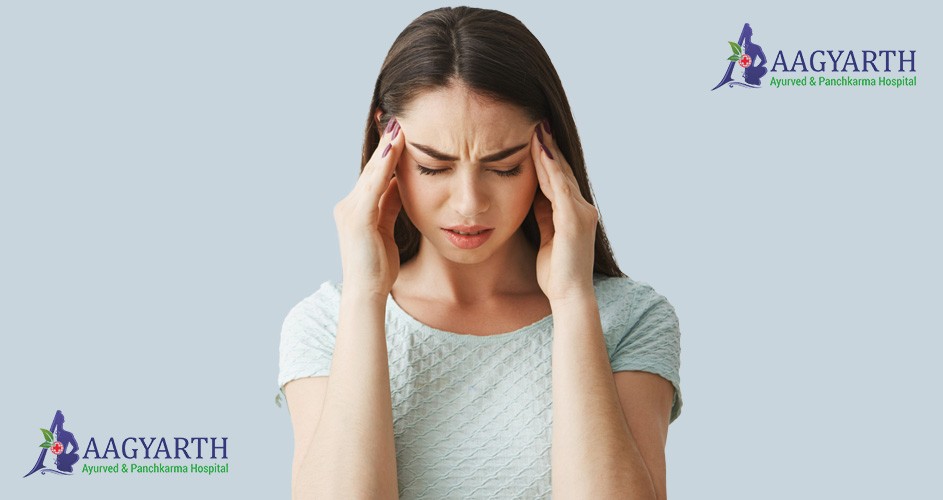Migraines are more than just a severe headache; they are a neurological condition that can severely disrupt daily life. Characterized by intense throbbing or pulsing pain, often on one side of the head, migraines can also include symptoms such as nausea, vomiting, and extreme sensitivity to light and sound. For many, these debilitating episodes can become a recurring part of life, leading to significant impacts on overall well-being and productivity.
In Ayurveda,migraines are understood through a different lens compared to conventional medicine. Migraine is views as Ardhaavbhedak, manifestation of an imbalance in the Vata and Pitta doshas.
Ayurveda offers a holistic approach to managing and treating migraines, addressing both the symptoms and the root causes. The treatment is often divided into two main categories: Dietary and lifestyle changes, and Panchakarma therapies.
1. Dietary and Lifestyle Adjustments
For those suffering from migraines, Ayurveda recommends:
– COOLING FOODS: Incorporate cooling and hydrating foods such as cucumber, mint, and coconut water to calm the Pitta dosha.
– Regular Eating Patterns: Establishing a regular eating schedule helps maintain digestive health, which is crucial since, imbalanced digestion can contribute to migraines.
– Avoiding Triggers: Identify and avoid common migraine triggers such as excessive caffeine, alcohol, and spicy foods.
2. Panchakarma Therapies
Panchakarma includes a range of therapies designed to cleanse the body of toxins (ama) and restore dosha balance. Several Panchakarma treatments are particularly beneficial for managing migraines:
– Shirodhara: This soothing therapy involves gently pouring warm, medicated oil over the forehead in a continuous stream. Shirodhara calms the nervous system, reduces stress, and helps balance the Vata and Pitta doshas, which can be particularly effective for migraine relief.
– Nasya: Nasya involves the administration of medicated oils, ghee or powders into the nasal passages. This therapy is believed to clear excess doshas from the head and sinuses, promoting overall mental clarity and reducing migraine frequency and intensity.
– Vamana: A therapeutic emesis or vomiting procedure designed to expel accumulated toxins from the stomach and upper digestive tract. By cleansing these areas, Vamana helps in reducing the impact of digestive disturbances that may contribute to migraines.
– Abhyanga: This therapeutic full-body oil massage improves circulation, relieves tension, and helps to balance the doshas. Regular Abhyanga sessions can enhance overall well-being and reduce the frequency and severity of migraine attacks.
Migraines can be a challenging condition to manage, but Ayurveda provides a comprehensive approach to treatment that addresses both the symptoms and their root causes. By integrating dietary and lifestyle changes with targeted Panchakarma therapies like Shirodhara, Nasya, Vamana, and Abhyanga, individuals can find relief from the debilitating effects of migraines and restore balance to their bodies and minds.
If you or someone you know suffers from migraines and seeks a holistic approach to treatment, consider exploring Ayurvedic therapies at Aagyarth Ayurvedic Panchkarma Hospital. Our experienced practitioners are dedicated to helping you achieve optimal health and well-being through personalized Ayurvedic care.
